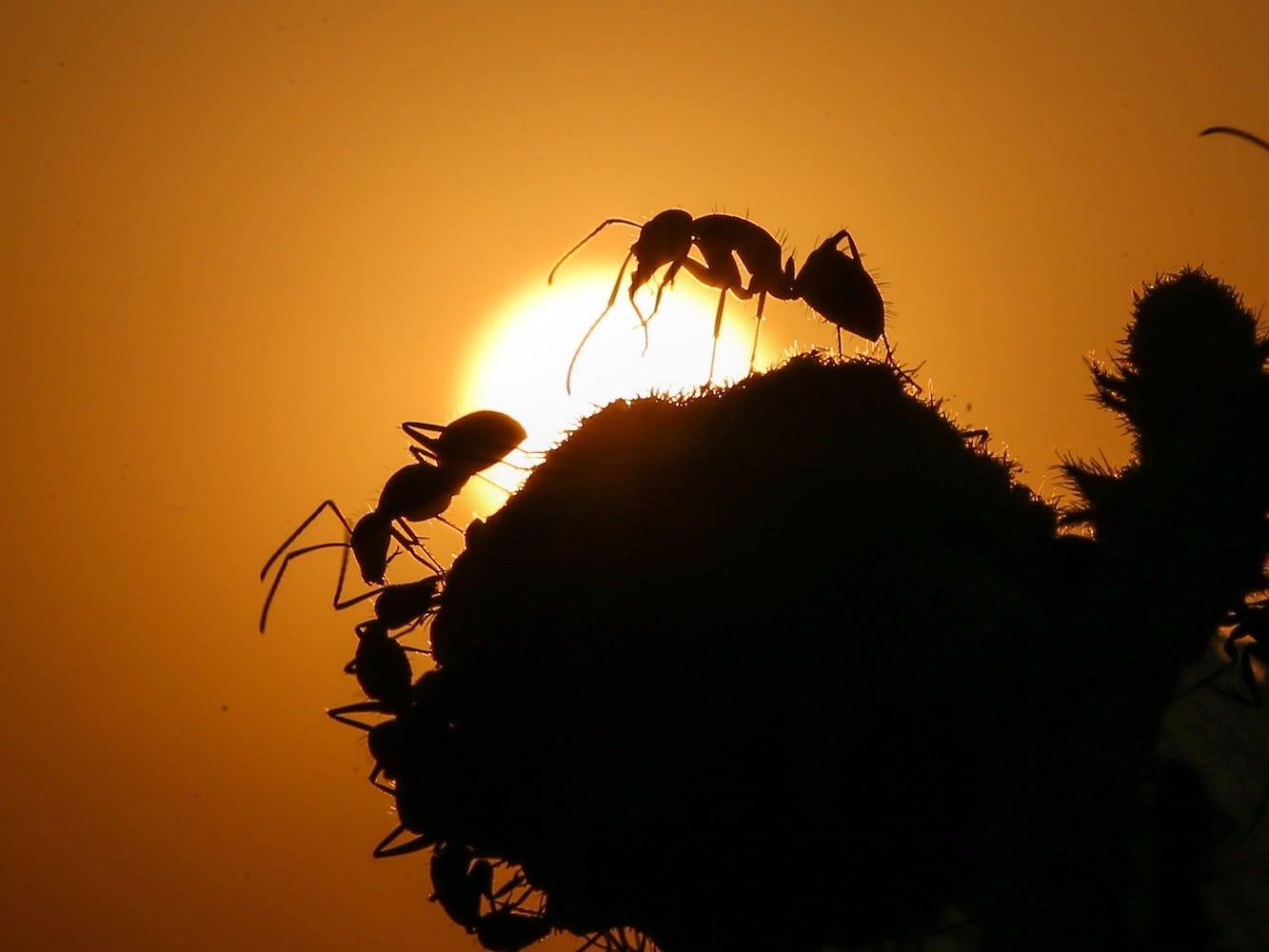
Marianne Guenot, Business Insider US, 22.09.2022
- Scientists have estimated the number of ants on earth, which is "unimaginable," a study author said.
- Per the study, there are 20 quadrillion ants on earth— 20 followed by 15 zeros.
- That's about 2.5 million ants per human.
An estimated 20 quadrillion ants roam the earth, scientists have estimated.
The astonishing number — 20,000,000,000,000,000 — means there would be about 2.5 million ants per single human living today.
"It's unimaginable," Patrick Schultheiss, a lead author on the study, told The Washington Post. "We simply cannot imagine 20 quadrillion ants in one pile, for example. It just doesn't work."
The number was published in the peer-reviewed journal Proceedings of the National Academy of Sciences on Monday.
"We estimated that 20 quadrillion average-sized ants corresponds to a dry weight or 'biomass' of approximately 12 million tonnes of carbon," the authors of the study said in a blog post.
That means that if all the ants were taken out of the ground and dried up, they would weigh more than all the wild birds and wild mammals combined, per the study.
They would also be about as heavy as about a fifth of the dry weight of all humans on earth.
To come up with the figure, scientists combed 489 published studies that surveyed the number of ants in a given environment.
It's unclear whether this astronomical number has remained steady or has grown over time, Schultheiss told The Post. A 2019 study found that since the 1970s up to half of the world's insects may have disappeared, Insider previously reported.
But when it comes to ants, "we have no idea," Schultheiss said.
With more than 12,500 known species, ants are present on almost every continent, according to Antmaps.org, a site that shows where ants have been spotted in the world.
An average ant colony can contain 250,000 individuals, Insider previously reported.
Ants are crucial in keeping our environments healthy, according to the website of the Harvard Forest.
They aerate the ground, which means water and oxygen can reach the roots of plants. They move seeds around and take them down to their tunnels, where they often sprout new plants.
They prey on pests and keep forests clean by eating up rotting wood and other decaying materials. And they are an important food source for other animals including, sometimes, humans.


